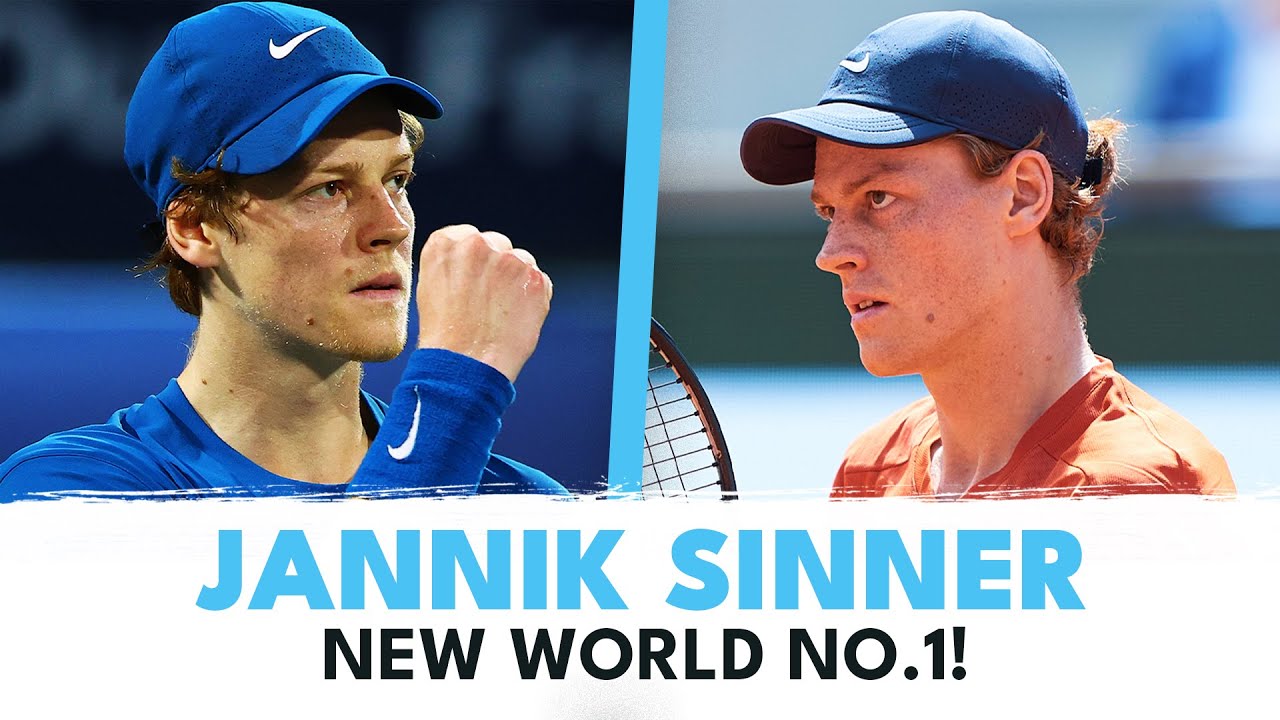In the relentless pursuit of perfection that defines elite sports, athletes constantly grapple with a fundamental question: how much should one change to improve, and when does evolution risk eroding the very essence of what makes them successful? Second-ranked tennis star Jannik Sinner recently offered a fascinating glimpse into this strategic dilemma, following his victory over Terence Atmane in Beijing.
Sinner`s reflections weren`t about a specific shot or tactical tweak, but rather a profound internal debate on identity and adaptation. “I try to be 20% different and 80% myself,” he mused during a post-match press conference. “But maybe I should be 95% myself and experiment 5%, doing it in calmer moments.” This seemingly minor percentage shift reveals a significant intellectual struggle at the pinnacle of professional tennis, a challenge faced by any high-performance individual.
The Lure of the New: Why Athletes Seek Change
The imperative to evolve is undeniable in any competitive arena. Opponents meticulously study your game, exploit weaknesses, and adapt their own strategies. Staying stagnant is, for all intents and purposes, a sure path to obsolescence. For a player like Sinner, whose powerful, aggressive baseline game has propelled him to the top, the pressure to add new dimensions — perhaps a more varied serve, subtle net play, or defensive fortitude — is immense. The promise of unlocking an “extra gear” or a “new weapon” is an enticing one, often championed by coaches, analysts, and even the legions of eager fans.
This drive for change isn`t unique to tennis; it`s a staple across sports. Think of basketball players adding a three-point shot to their repertoire, footballers refining their weaker foot, or sprinters tweaking their starting blocks for micro-improvements. The quest is always for that marginal gain, that elusive edge that separates the good from the truly great.
The Peril of Losing Oneself: The Identity Crisis
However, Sinner`s cautious approach highlights the inherent dangers of over-experimentation. When an athlete ventures too far from their core identity, they risk a cascade of negative effects that can be detrimental to both performance and morale:
- Loss of Confidence: Unfamiliar techniques can feel awkward and unnatural, leading to unforced errors and crippling self-doubt in crucial moments.
- Reduced Instinct: The fluid, often unconscious movements that define peak performance are built on years of repetition. Conscious overthinking of newly implemented elements can disrupt this vital flow and make play seem laborious.
- Erosion of Strengths: Time and focus diligently spent on developing new areas might inadvertently detract from maintaining and sharpening existing strengths, leading to a diluted overall game.
- Predictability for Opponents: Ironically, if an athlete`s game becomes a confused blend of half-measures, it can become easier for opponents to anticipate and exploit, as the player`s core identity becomes less defined.
Sinner`s concern about “not distorting my identity as a player” is a poignant acknowledgment of this risk. His initially stated “20% different” model suggests a significant, perhaps even strenuous, mental investment. Reducing it to “5% in calmer moments” isn`t a retreat from evolution, but a refined, more sustainable strategy for integrating change.
Strategic Incrementalism: The Sinner Philosophy
The revised “95% me, 5% experiment” philosophy advocates for a strategic incrementalism. This isn`t about ignoring development, but rather about integrating it in a controlled, measured fashion. “Calmer moments” could refer to off-season training, less high-stakes matches, or specific drills where the immediate pressure to perform at an elite level is lower. It`s the critical difference between trying to rebuild an engine mid-race and refining it during a scheduled pit stop.
This approach emphasizes several key principles:
- Foundation First: Always reinforce the core strengths that have consistently brought success. These are the pillars upon which further development rests.
- Targeted Innovation: Identify specific, manageable areas for improvement that genuinely enhance the existing game, rather than attempting a complete overhaul.
- Contextual Application: Introduce new elements when the stakes are lower, allowing for genuine integration without the paralyzing grip of performance anxiety.
- Psychological Preservation: Protect mental energy by avoiding constant, overwhelming self-critique and the exhaustive demands of a perpetual overhaul.
It`s a testament to Sinner`s maturity and self-awareness that he`s engaging with such nuanced strategic thinking. Many athletes, perhaps less introspective, might simply push for more change, only to find themselves adrift. Sinner, it seems, prefers the methodical precision of a watchmaker to the reckless abandon of a mad scientist, especially when his career is the mechanism in question.
Beyond the Court: A Universal Lesson
Sinner`s introspection offers a valuable lesson extending far beyond the tennis court. In any field demanding high performance — be it business, art, or technology — the balance between innovation and core competency is paramount. How much do you adapt to market trends versus sticking to your brand`s core values? When do you pivot strategically, and when do you double down on what demonstrably works?
The answer, as Sinner subtly suggests, often lies not in radical transformation, but in intelligent, iterative refinement. It`s about understanding oneself, respecting one`s foundational strengths, and introducing change with deliberate purpose, ensuring that evolution enhances, rather than diminishes, identity. For Jannik Sinner, the path to continued greatness isn`t just about hitting harder or serving better; it`s about mastering the delicate art of self-evolution, one precise percentage point at a time.

